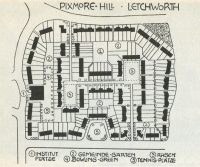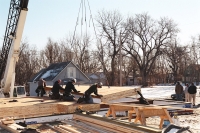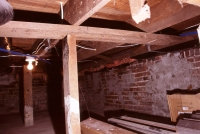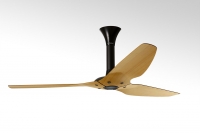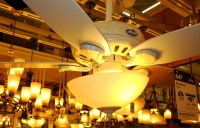Ceiling fans are an old-fashioned but effective and efficient approach to comfort.
Ever since one of our ancient ancestors picked up a palm leaf and used it to stir a cooling breeze, fans have played an important role in keeping us comfortable. From simple, hand-powered devices used to content Egyptian pharaohs, fans have evolved into automatic, efficient, climate-control appliances. Developed by father John and son James C. Hunter in 1886, the mechanical ceiling fan remains the most successful improvement. Even with the advanced climate control systems available today, ceiling fans provide an economical means of providing indoor comfort. As a supplement to central air conditioning, a ceiling fan can save 10% to 15% on summer cooling costs. In certain circumstances, a ceiling fan can help to balance home air temperatures for more efficient heating.

